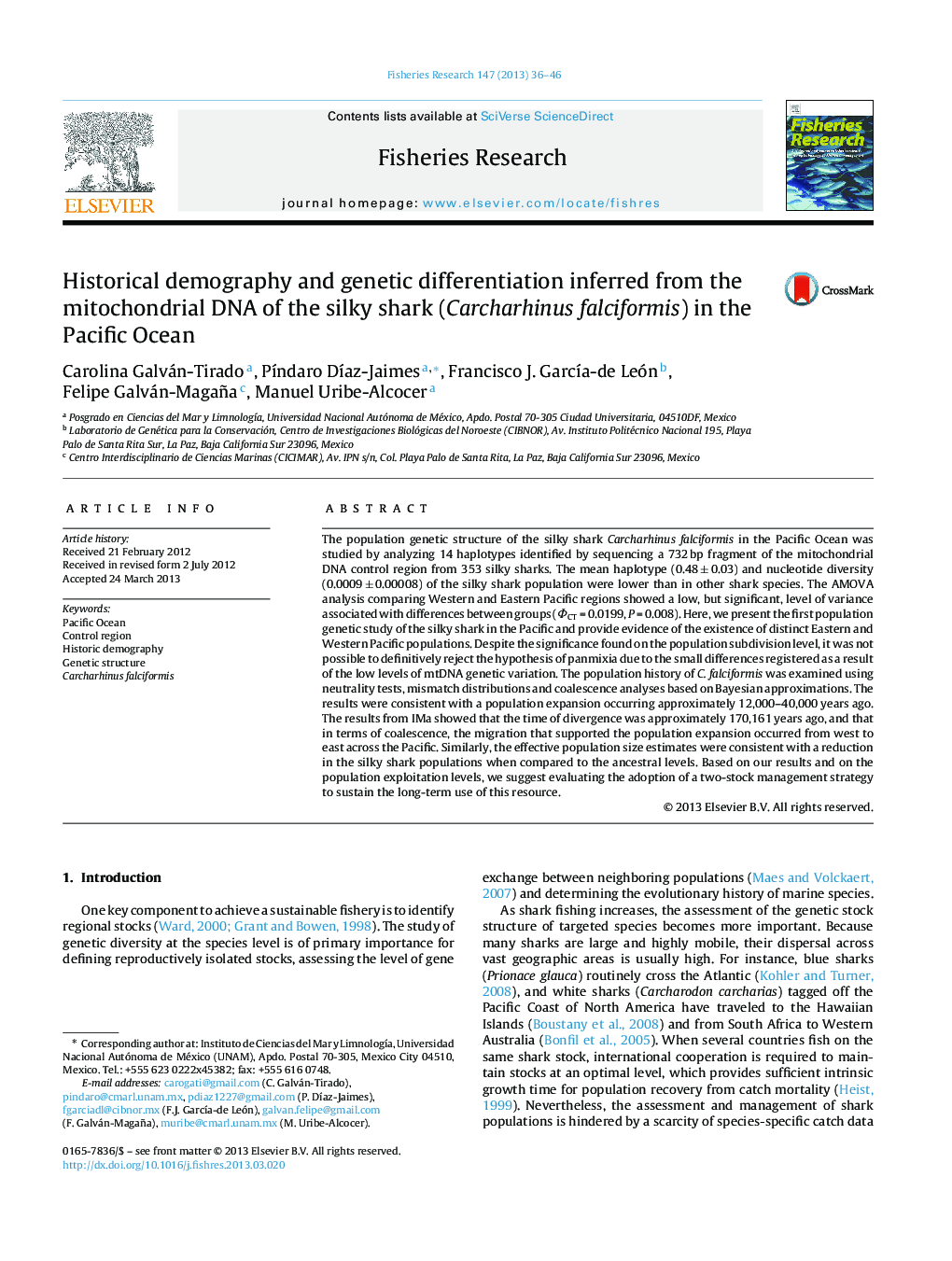| کد مقاله | کد نشریه | سال انتشار | مقاله انگلیسی | نسخه تمام متن |
|---|---|---|---|---|
| 4543078 | 1626821 | 2013 | 11 صفحه PDF | دانلود رایگان |

• We present the first population genetic study of the silky shark Carcharhinus falciformis.
• Levels of genetic variation are low.
• There is evidence of population expansion.
• We provide evidence of population subdivision among the Eastern and Western Pacific populations.
• Separate management strategy for each population is needed for conservation.
The population genetic structure of the silky shark Carcharhinus falciformis in the Pacific Ocean was studied by analyzing 14 haplotypes identified by sequencing a 732 bp fragment of the mitochondrial DNA control region from 353 silky sharks. The mean haplotype (0.48 ± 0.03) and nucleotide diversity (0.0009 ± 0.00008) of the silky shark population were lower than in other shark species. The AMOVA analysis comparing Western and Eastern Pacific regions showed a low, but significant, level of variance associated with differences between groups (ΦCT = 0.0199, P = 0.008). Here, we present the first population genetic study of the silky shark in the Pacific and provide evidence of the existence of distinct Eastern and Western Pacific populations. Despite the significance found on the population subdivision level, it was not possible to definitively reject the hypothesis of panmixia due to the small differences registered as a result of the low levels of mtDNA genetic variation. The population history of C. falciformis was examined using neutrality tests, mismatch distributions and coalescence analyses based on Bayesian approximations. The results were consistent with a population expansion occurring approximately 12,000–40,000 years ago. The results from IMa showed that the time of divergence was approximately 170,161 years ago, and that in terms of coalescence, the migration that supported the population expansion occurred from west to east across the Pacific. Similarly, the effective population size estimates were consistent with a reduction in the silky shark populations when compared to the ancestral levels. Based on our results and on the population exploitation levels, we suggest evaluating the adoption of a two-stock management strategy to sustain the long-term use of this resource.
Journal: Fisheries Research - Volume 147, October 2013, Pages 36–46